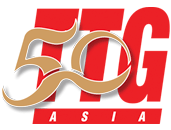Mekong travel suppliers should leverage the current travel hiatus from prolonged border closings to adjust to the new playing field and make crucial updates across the board, opined panelists at the Virtual Destination Mekong Summit on August 25.

Players will need to adjust to shifting demands from key source markets like China and Japan, where big group tours and business travel have fallen out of favour and small group travel and family holidays are rising in popularity.
“The emerging smaller, (bespoke) agencies might be your best partner for the next few months and even for the next two years,” said George Cao, CEO & co-founder of Dragon Trail Interactive.
“You may also need to assess (your partners) because some…may not be in business anymore, but there are a lot of new (bespoke) tour operators; people who are focusing on the higher end of the market have emerged,” Cao added.
As they wait for borders to reopen, players should also reassess their products as well as their source markets. Said Bernard Kee, regional manager Southeast Asia, STR: “If your source market today is not a market that’s ready to reopen with your country, you have to look at new source markets.”
He encourages reliance on attributable data. “Acquire attributable forecast reports if you can – forward-looking statistics and on-the-books reports from data companies, which will empower you to measure yourself against the market when it’s open,” Kee advised, adding that data must be from source and not from script.
Safety messaging in terms of products and destinations also emerged as a very strong theme among conference panelists.

Players should also be aware of shifts in messaging channels, especially in China where the consumption of short video content has increased tremendously. While WeChat and Weibo have grown even stronger than before the pandemic, there is also the extremely popular Douyin, the Chinese app that inspired TikTok, and emerging players like Xiaohongshu, an app where lifestyle KOLs share their experiences.
“These platforms have matured commercially so they have very solid advertising offerings that you as a destination or travel brand can take advantage of. (You may want to) look at your channel mix and invest more in streaming and short videos,” said Cao, referencing the Tourism Authority of Thailand as an example of one of the most active NTOs that has striven to increase its presence in China on WeChat and other streaming platforms.
He further pointed out that participation in online webinars, roadshows and virtual/hybrid tradeshows could help to maintain and strengthen the relationship with the OTAs and the Chinese travel trade during this time.
Kee also highlighted the need for collaboration at a time when “the travel industry has hit a hard reset”. “Collaborate with industry associations; collaborate with your previous enemies who are now your friends, because some of them have folded so they are now your alliance,” he said.




















